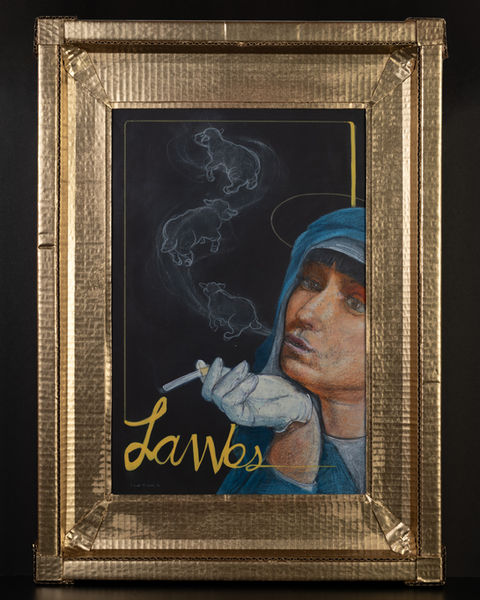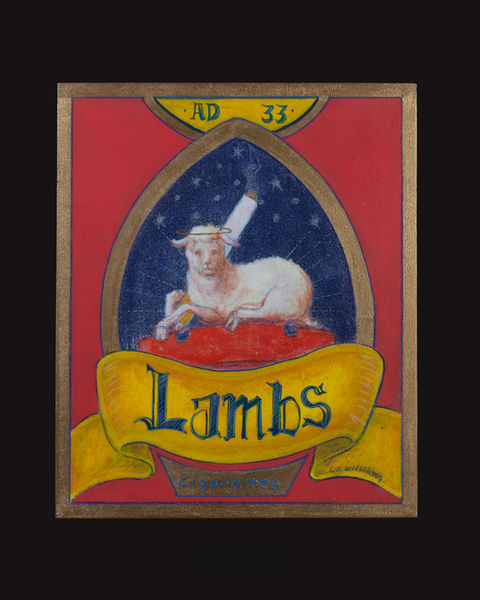advertising icons of c. s. williams
C. S. Williams is the creative alias of artist Carlo W. Savo, developed as a means to explore a distinct and separate artistic philosophy from his primary body of work. Drawing direct inspiration from 20th-century advertising and illustration, this persona allows Savo to channel a lifelong fascination with the bold graphic language of a bygone era.
After nearly two decades working in the antiques and fine art industry, Savo developed a deep appreciation for the visual culture of the past, particularly the compelling, stylized imagery found in vintage advertisements. Although this influence often crept into his painting practice, it never quite aligned with his primary focus on landscape. The creation of C. S. Williams became a necessary outlet—an intentional space to fully embrace and explore this visual language on its own terms.
The work of C. S. Williams is both an homage to the golden age of illustration and a critical reflection on the power of imagery in shaping human belief and behavior. Through this body of work, Savo investigates how visual media communicates, manipulates, and endures.
The Intersection of Belief and Imagery
Every image tells a story, and every story is built on a foundation of beliefs. Our experiences shape the narratives we construct, and through imagery, we reinforce and communicate these belief systems. The human mind is profoundly influenced by what it sees—so much so that entire industries, such as advertising, have been built around the power of visual persuasion. But this practice is not a modern invention; it has existed since the dawn of human culture. Imagery has always been a primary tool for conveying belief systems, whether in religious iconography or commercial advertising.
What we see shapes what we believe, and in turn, our beliefs dictate how we interpret what we see. It is this inextricable relationship between belief and visual information that has driven me to create this series of works. By deliberately blending religious iconography with the graphic power of 19th- and 20th-century advertising, I seek to challenge the way we perceive these images. One set of imagery is considered sacred, while the other is often dismissed as manipulative—yet both serve the same fundamental purpose: to reinforce a belief system and, ultimately, to influence behavior. One seeks to sell you an idea, while the other sells you a product.
I invite viewers to question their assumptions. If the combination of sacred imagery with advertising aesthetics feels unsettling, that discomfort is intentional, not as an act of desecration, but as a prompt for reflection. Why do we hold certain images as sacred and others as profane?
A note about the process.
Imperfection- Though created with intention and skill, all of the work is imperfect. Things such as drips, skewed text, or coloring over the lines have been left as is. Humans are inherently flawed, thus, the things we create and believe are also flawed. Accepting this brings us closer to what it means to be human.
The gold frames- The practice of using precious materials in religious art is as old as religion itself. The more it costs to uphold and display your beliefs, the more sacred they become. With this in mind, I constructed frames from cardboard. While they initially give the impression of importance and value, a closer look reveals their humble materials—hot glue, spray paint, and paper. Belief systems, no matter how grand they appear, may often be held together by surprisingly little. What is presented as a shining ideal may, in reality, be no more than a paper moon.

The 15 works below were exhibited at the Cynics and Saints show on May 2025.















